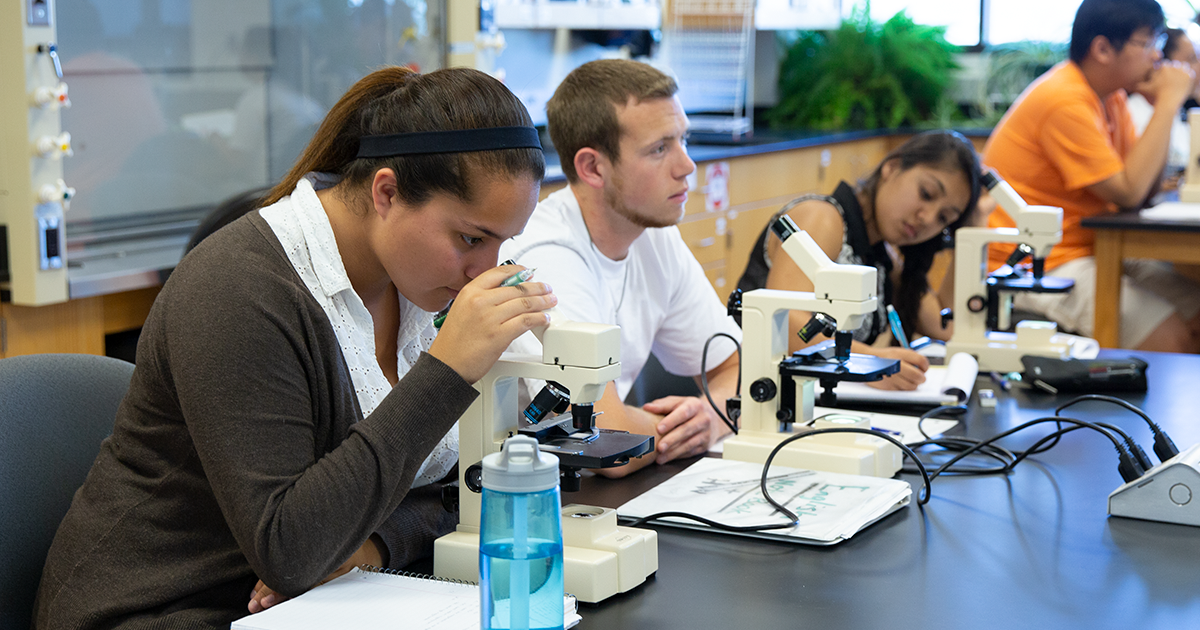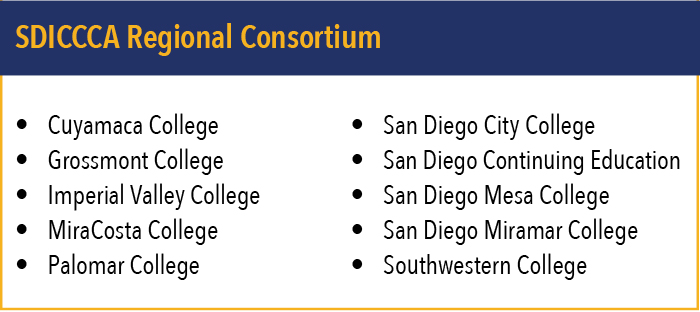How San Diego-Area Community Colleges Are Breaking Barriers to Student Success
Posted on

For decades, community college students have faced systemic barriers to completing their courses. Data shows many students waste years paying for and taking non-credit-bearing, remedial courses in math and English, often never finishing the requisite, college-level classes that count towards graduation.
To address this issue, the San Diego and Imperial Counties Community College Association (SDICCCA) Regional Consortium is reconceptualizing the community college experience, enabling students to maintain steady momentum as they follow streamlined and efficient paths toward attaining a certificate, degree, or living-wage employment.
The Consortium, comprised of leaders from 10 San Diego-area community colleges, is implementing Guided Pathways to address barriers to completion and prepare the state’s future workforce for the 21st century.
The Consortium’s approach, early milestones, and challenges are captured in a recent report, Leveraging Strong Workforce Funding to Build an Innovative Infrastructure: How Community Colleges Take a Regional Approach to Guided Pathways in the San Diego and Imperial Region.
A team from WestEd’s Innovation Studies serves as consultants to the region. In this Q&A, Senior Research Associate at WestEd Joy Lewis and SDICCCA Regional Chair Mollie Smith discuss this large-scale institutional reform initiative.
Joy Lewis: Describe some of the challenges community college students in your region face and how those challenges led to the creation of this initiative. What was the impetus?
Mollie Smith: There is a lack of qualified candidates for high-wage, high-demand jobs. The SWP is an effort to align public investment with labor market demand. Career education programs are underrepresented when students learn about what to major in at college. Typically, students are guided toward transfer. Students don’t get adequate counseling to tell them their career options. Career programs don’t always provide students with the skills they need for employment. High school students are not made aware of all of their career options. Career education students don’t receive the same level of support as transfer students.
Joy Lewis: What are Guided Pathways and how is the program helping to close the achievement gap?
Mollie Smith: Guided Pathways is an overarching, intrusive design based on Completion by Design (2016), which requires defining all interactions with students based on a student-centered model. All strategies are focused on student interaction from the first connection, intake, enrollment, retention, success, completion, and job placement. The institution is designed around providing intensive guidance for the student.
Joy Lewis: To what do you attribute the innovative and collaborative approach to implementing these reforms?
Mollie Smith: The vision of this work was born with the Career Pathways Trust, a grant that helped us form links to all of the stakeholders in the region, including those from K–12 districts, community colleges, and industry sectors. This infrastructure allowed us to reach every student from middle school, high school, and adult education program and connect them to our community colleges. These relationships built in the region have propelled the work forward. We also are grateful to the expertise and support provided by WestEd in the areas of technical assistance, research, and support of our implementation effort in the region.

Joy Lewis: What does the regional infrastructure look like across the 10 community colleges?
Mollie Smith: It starts and ends with the students in our region. All our efforts focus tightly on strong career pathways and a well-defined roadmap within which every single student can find their path, stay on it, and succeed in their education and career. Additionally, leaders work together to set priorities, weigh critical decisions, follow progress, and ensure our goals and indicators of success are being met.
Joy Lewis: Community college presidents interviewed for the report describe the work through an equity lens. How do the pathways and infrastructure support a student’s ability to earn a living wage and the economic growth of the region?
Mollie Smith: We know our student populations and understand their needs. We continually work to design programs of study and services that help all students succeed. It’s about access to education programs and support to succeed, whatever the educational and career goals of the student is.
Joy Lewis: How is success measured?
Mollie Smith: We look at metrics seriously. We know we succeed when we are engaging more students in middle school and high school, whatever their desired career choices or programs of study may be. Some may come to our community colleges and others may move on to transfer to a four-year institution. We also track completion in programs of study and employment and wage gains. The ultimate determination of success is more students earning higher wages and a reduction in the labor market gap in our counties.
Read Leveraging Strong Workforce Funding to Build an Innovative Infrastructure: How Community Colleges Take a Regional Approach to Guided Pathways in the San Diego and Imperial Region to learn more about this initiative.
